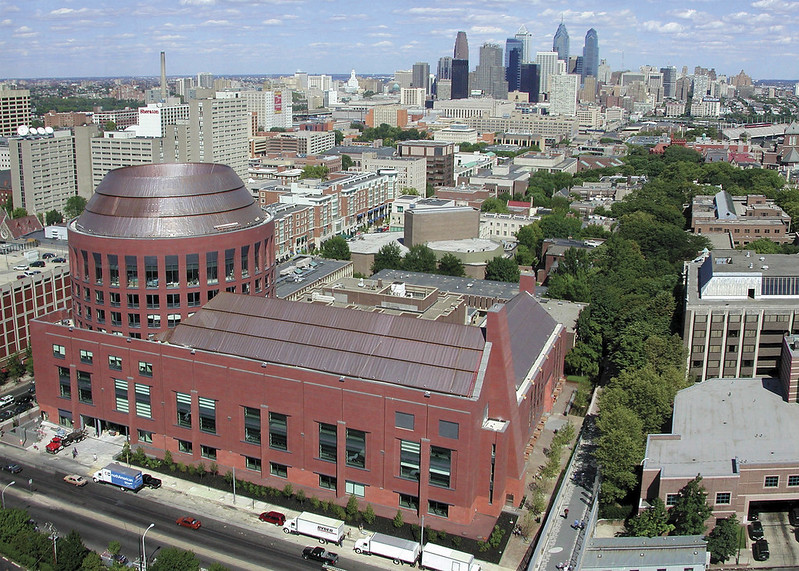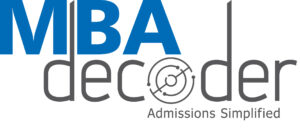
The Wharton MBA interview process is the most distinctive among all b-schools, centering around a Team-Based Discussion (TBD) followed by a brief individual interview.
Duration: 35 minutes team Based Discussion (TBD) + 10-minute face-to-face interview
Format: By Invitation only
Who conducts the Wharton MBA Interview? Members of admissions committee and second-year student ambassadors
Location: Both the TBD and the interview are held virtually
Interviewer’s access: Interviewers’ have access to the applicant’s resume; these are blind interviews
How to schedule the Wharton MBA interview? As Wharton requires applicants to participate in team discussions, they send interview invites to all applicants from one application cycle on the designated date mentioned on their website. Applicants whose applications are not moving forward(dinged) are also informed on that same day.
Applicant invited for the interview are provided with the necessary information about the TBD, including the prompt for the year, well in advance. This allows them time to prepare their one-minute response.
Wharton MBA Interview Process: The TBD is a 35-minute exercise where 5-6 applicants collaborate to develop a solution to the given prompt. Teams are assigned randomly and participants are not acquainted beforehand. The exercise is meant to be collaborative and assesses applicants’ communication style, engagement and decision-making in group settings. Two observers, typically second-year students or admissions ambassadors, oversee the discussion.
All applicants in a single year’s application cycle receive the same prompt in advance. This prompt is always centerd around Wharton, like designing a new course or curriculum for a newly launched program or creating a new committee for social impact. This requires applicants to research the MBA program so they can prepare their response which is both informed and relevant.
During the TBD, the first 5-7 minutes are reserved for each applicant to present their ideas. Every applicant is allotted ONE minute and its advisable to adhere to this timeframe to keep the discussion on track. The observers then put the timer on, allocating roughly 30 minutes for the rest of the exercise. The team collectively discusses their ideas for the next 25 minutes to develop a solution. The final 5 minutes are dedicated to preparing and delivering a presentation to the group observers. After the TBD, the observers break out into chat rooms where they interview every applicant individually while other applicants wait in the virtual waiting room for their turns. Every interview lasts about 10 minutes.
Due to the brief nature of these interviews, typically only 2-3 questions are posed. Possible questions include:
Your views on how the TBD went
What could be improved in the team’s performance?
Did you notice any conflicts within your team?
What challenges did you face during the TBD?
How did you contribute to the TBD?
Could you have done something better?
There may be questions about your goals, reasons for applying to Wharton or an opportunity for you to ask the interviewer questions. Demonstrating observance of the group dynamics and self-awareness about your performance would go towards making your interview a successful one.
Tips for Succeeding in the TBD:
Build a rapport with teammates: Logging into the TBD virtual room a little early can help you get acquainted with other participants and break the initial ice. This can ease nerves and foster a more collaborative group discussion
Practice your one-minute presentation: Although a single minute is very brief, you would not want to overshoot this time limit as a respect to your group members who abide by it. So practice your one-minute presentation. One caveat is that while you don’t want to waffle and sound unimpressive due to lack of practice, you also don’t want to sound robotic because of over-practice.
Be open and flexible: Don’t feel disheartened if your idea is not selected by your group. Maintain a positive and flexible attitude and actively contribute to developing the chosen solution. By listening attentively and constructively supporting your teammates’ ideas, you can play an effective role in building a group presentation.
However, if your group selects your idea, then elaborate on the plan and lead the discussion. Even in this case, encourage suggestions from your group mates to build a stronger solution together. Avoid dominating the discussion just because your idea got selected; instead, foster an inclusive environment.
Show your team skills, but genuinely: As the TBD tests your team skills, its natural you will try to demonstrate these. However, instead of agreeing with others merely to avoid conflict, you can respectfully disagree and offer constructive feedback to advance the discussion. This approach can showcase your genuine collaboration skills and commitment to the team’s success.
Leverage your natural strengths in a team setting: What role do you tend to play in your teams? Are you good at keeping the discussion’s momentum by including everyone? Do you like to listen quietly and contribute by consolidating the discussion? Are you good at keeping track of the time? Adopt your natural role.
Your group should reserve the last five minutes to decide on who speaks what during the presentation. While it’s not mandatory for everyone to speak, the presentation should not be dominated by just one or two individuals. This would be your last opportunity to adjust team dynamics if needed, so collectively decide who will present and for how long, keeping the group’s best interests in mind.
Outcomes: Wharton interviews roughly 40% of applicants. 1 out of 3 people interviewed make the cut to admission.
